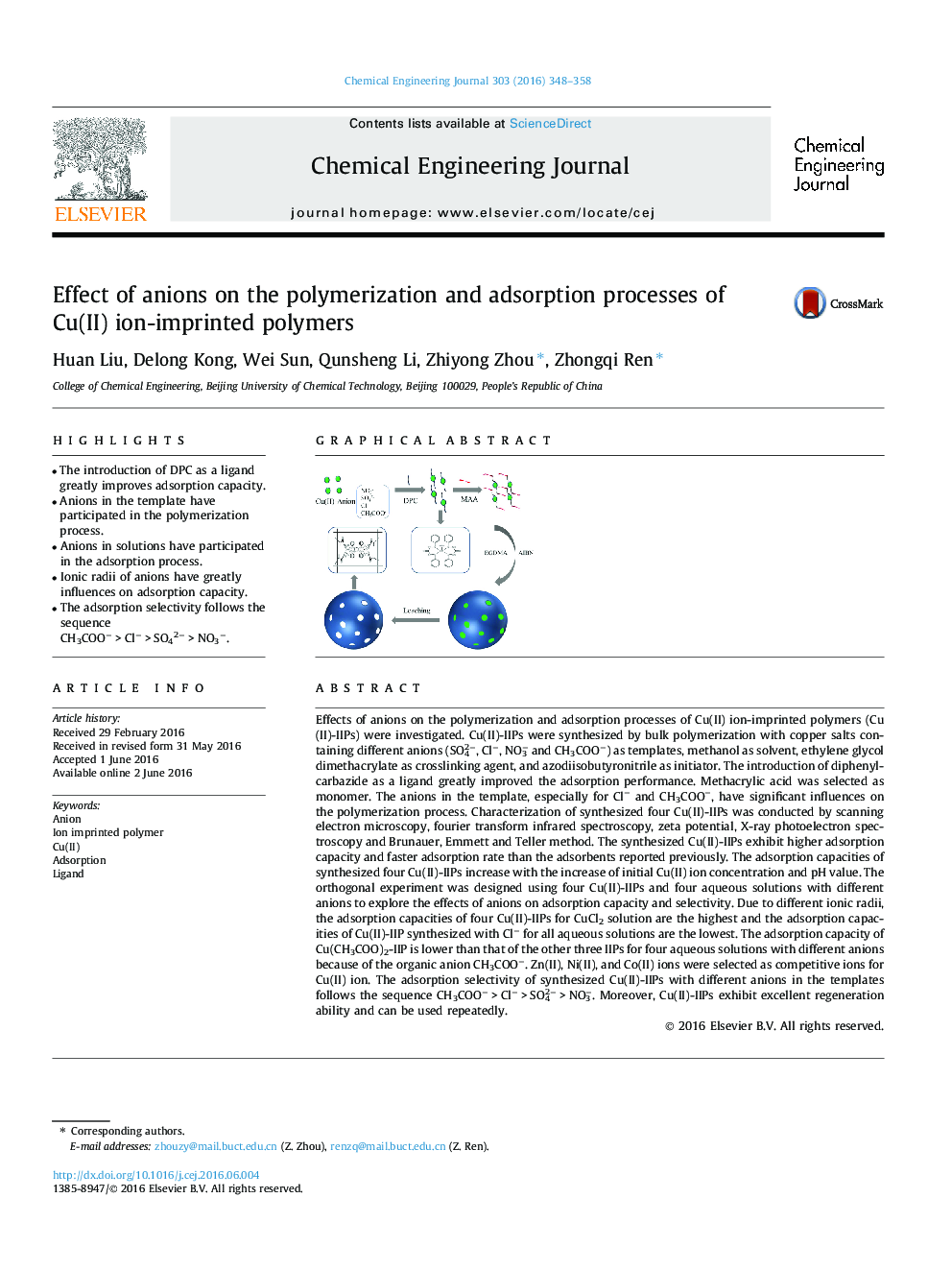| کد مقاله | کد نشریه | سال انتشار | مقاله انگلیسی | نسخه تمام متن |
|---|---|---|---|---|
| 145519 | 456341 | 2016 | 11 صفحه PDF | دانلود رایگان |

• The introduction of DPC as a ligand greatly improves adsorption capacity.
• Anions in the template have participated in the polymerization process.
• Anions in solutions have participated in the adsorption process.
• Ionic radii of anions have greatly influences on adsorption capacity.
• The adsorption selectivity follows the sequence CH3COO− > Cl− > SO42− > NO3−.
Effects of anions on the polymerization and adsorption processes of Cu(II) ion-imprinted polymers (Cu(II)-IIPs) were investigated. Cu(II)-IIPs were synthesized by bulk polymerization with copper salts containing different anions (SO42−, Cl−, NO3− and CH3COO−) as templates, methanol as solvent, ethylene glycol dimethacrylate as crosslinking agent, and azodiisobutyronitrile as initiator. The introduction of diphenylcarbazide as a ligand greatly improved the adsorption performance. Methacrylic acid was selected as monomer. The anions in the template, especially for Cl− and CH3COO−, have significant influences on the polymerization process. Characterization of synthesized four Cu(II)-IIPs was conducted by scanning electron microscopy, fourier transform infrared spectroscopy, zeta potential, X-ray photoelectron spectroscopy and Brunauer, Emmett and Teller method. The synthesized Cu(II)-IIPs exhibit higher adsorption capacity and faster adsorption rate than the adsorbents reported previously. The adsorption capacities of synthesized four Cu(II)-IIPs increase with the increase of initial Cu(II) ion concentration and pH value. The orthogonal experiment was designed using four Cu(II)-IIPs and four aqueous solutions with different anions to explore the effects of anions on adsorption capacity and selectivity. Due to different ionic radii, the adsorption capacities of four Cu(II)-IIPs for CuCl2 solution are the highest and the adsorption capacities of Cu(II)-IIP synthesized with Cl− for all aqueous solutions are the lowest. The adsorption capacity of Cu(CH3COO)2-IIP is lower than that of the other three IIPs for four aqueous solutions with different anions because of the organic anion CH3COO−. Zn(II), Ni(II), and Co(II) ions were selected as competitive ions for Cu(II) ion. The adsorption selectivity of synthesized Cu(II)-IIPs with different anions in the templates follows the sequence CH3COO− > Cl− > SO42− > NO3−. Moreover, Cu(II)-IIPs exhibit excellent regeneration ability and can be used repeatedly.
Figure optionsDownload as PowerPoint slide
Journal: Chemical Engineering Journal - Volume 303, 1 November 2016, Pages 348–358